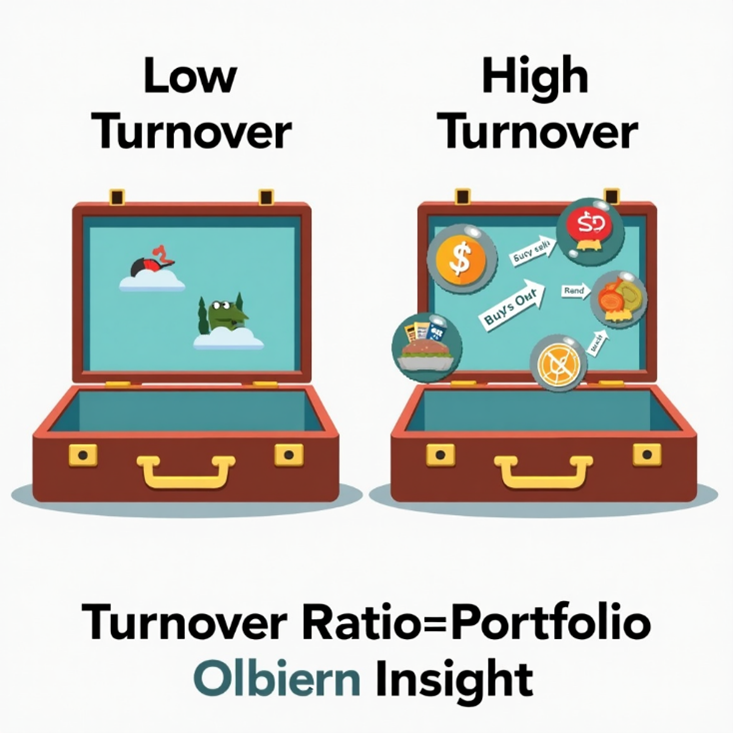There are no items in your cart
Add More
Add More
| Item Details | Price | ||
|---|---|---|---|
The Portfolio Turnover Ratio tells you how actively a fund manager is buying and selling stocks. Learn how this metric affects costs, returns, and your investing style.
08/06/2025
" When you invest in a mutual fund, the fund manager isn’t just sitting idle — they’re actively buying and selling securities. But how often they do that can make a big difference. That’s where the Portfolio Turnover Ratio (PTR) comes in.
In this blog, we explain what PTR is, why it matters, and how to judge whether high or low turnover suits your investing style — with a relatable example.

What Is Portfolio Turnover Ratio (PTR)? PTR measures how frequently assets in a fund are replaced in a year.
Formula:
PTR (%) = Lesser of Total Buy/Sell Transactions ÷ Avg. AUM × 100 A 100% PTR means the fund’s entire portfolio has been replaced once during the year. ✅ High vs. Low Turnover

Conclusion
PTR is like the fund manager’s activity report card. High turnover may mean more agility, but it can also mean higher costs. Know your style — do you prefer an active trader or a patient investor?
Check the PTR in the fund factsheet. Match the manager’s style with your goals — and invest accordingly.
Summary Table: Portfolio Turnover Insights
| Fund Category | Typical PTR (%) | Style | Impact on Cost |
| Index Funds | 5% – 15% | Passive | Very Low |
| Large Cap Funds | 20% – 50% | Moderate Active | Low to Moderate |
| Small Cap Funds | 80% – 150% | Aggressive/Active | High |
| Tax-Saving (ELSS) | 20% – 40% | Long-Term Focused | Low |

Dr. Satish Vadapalli
Research Analyst